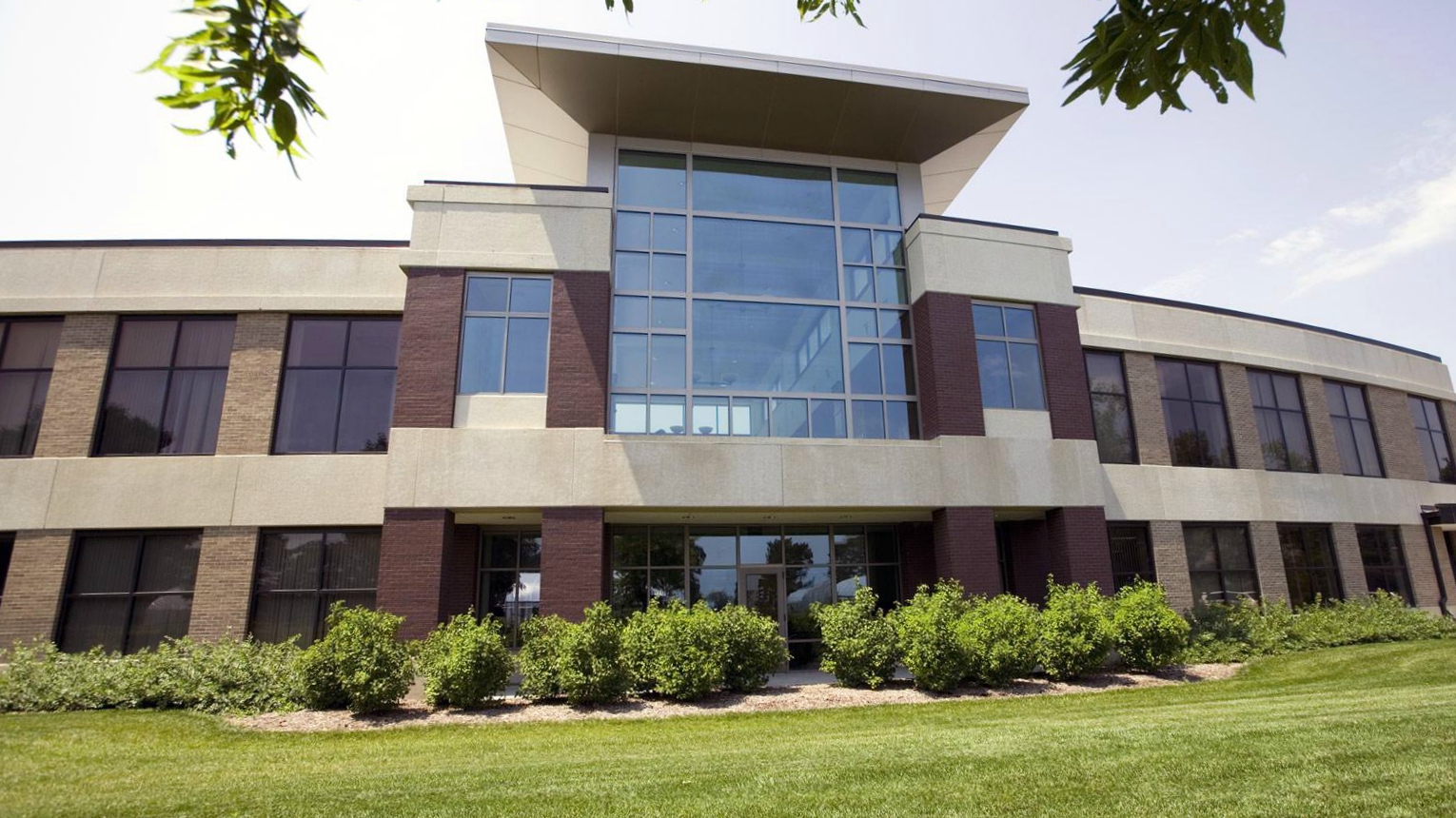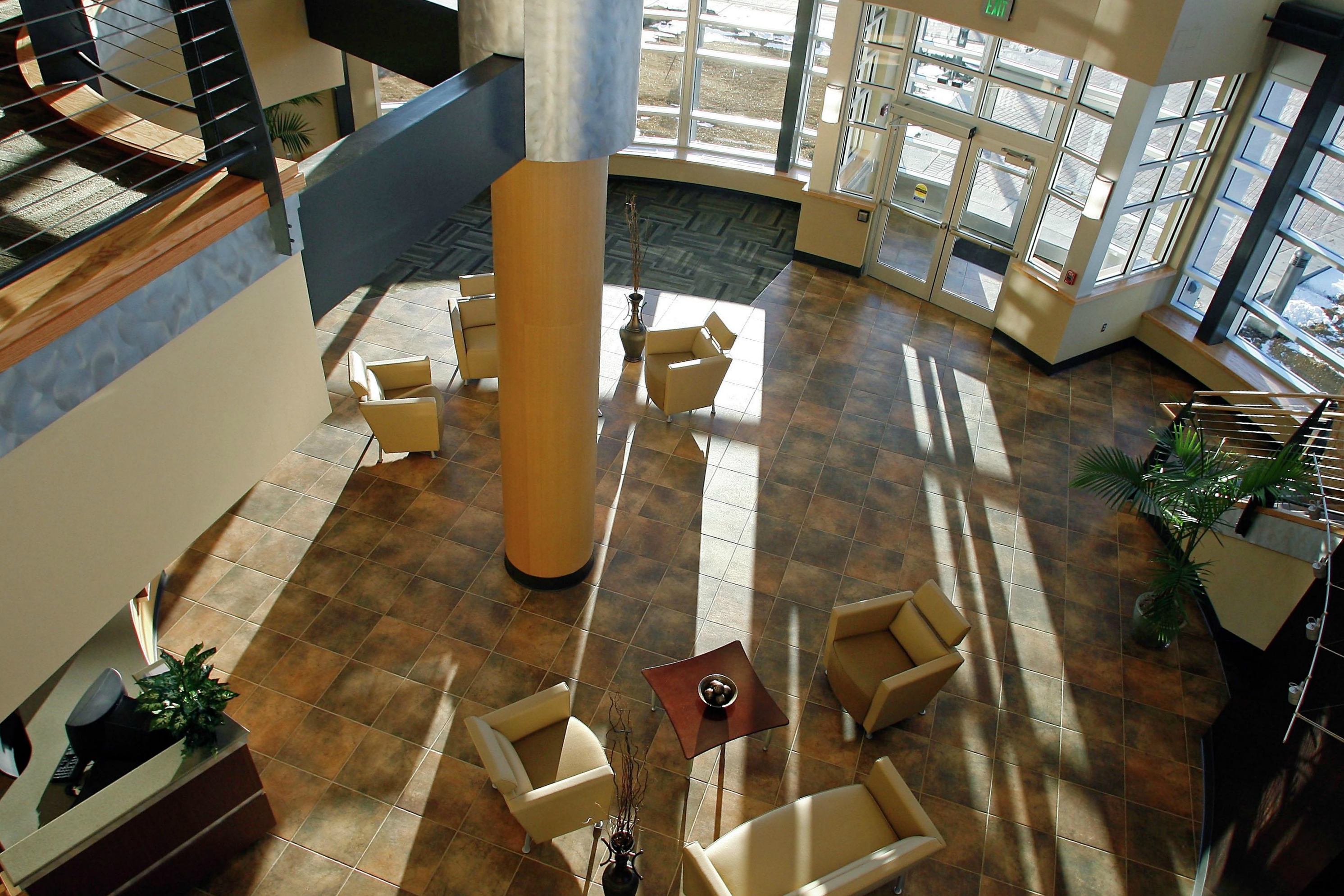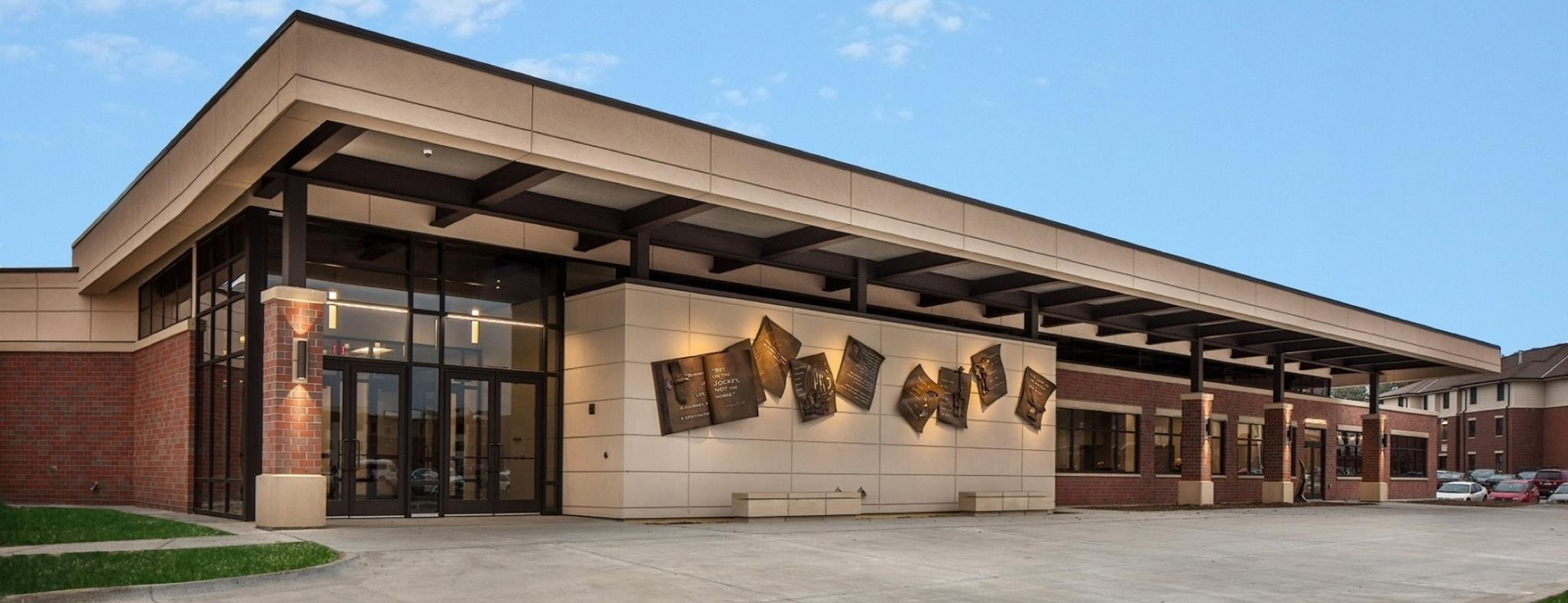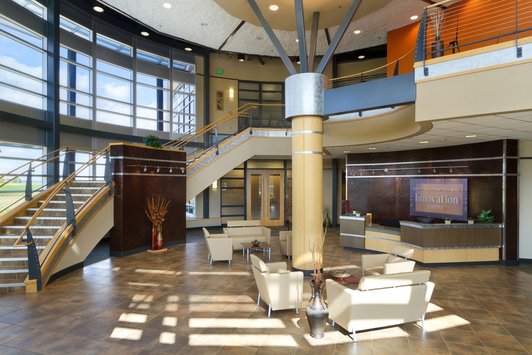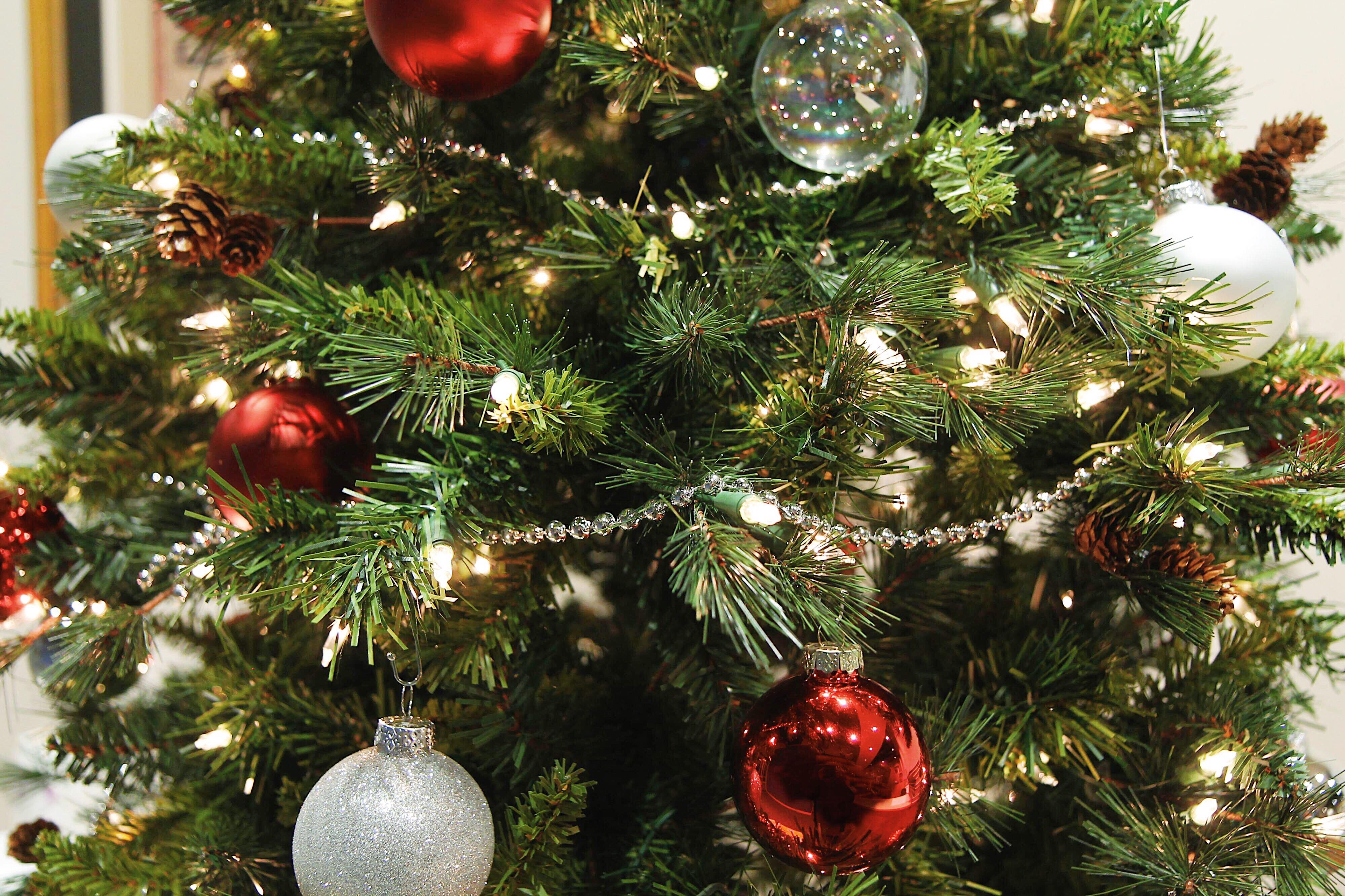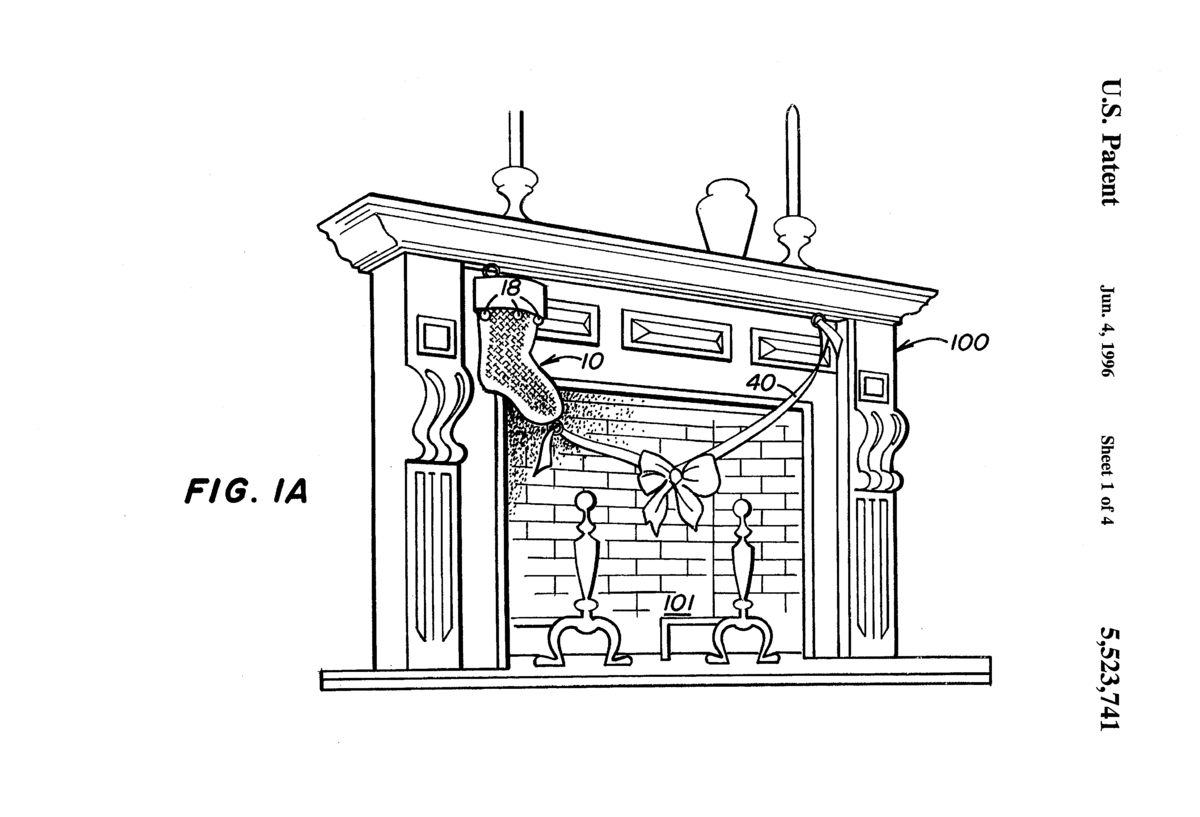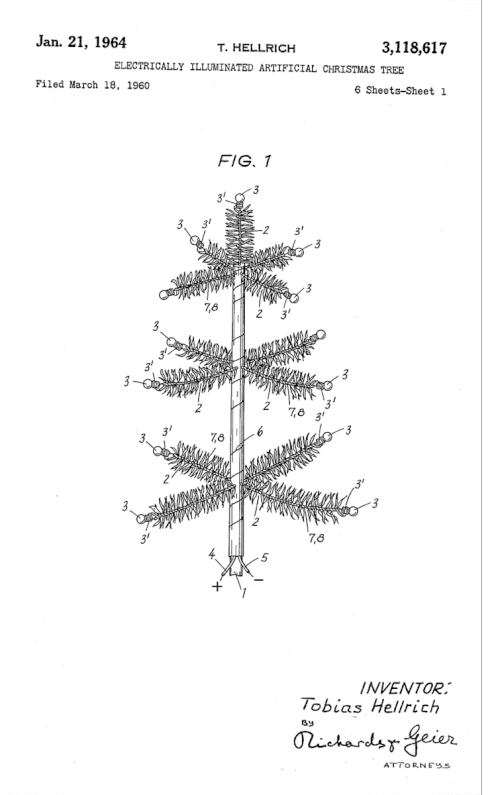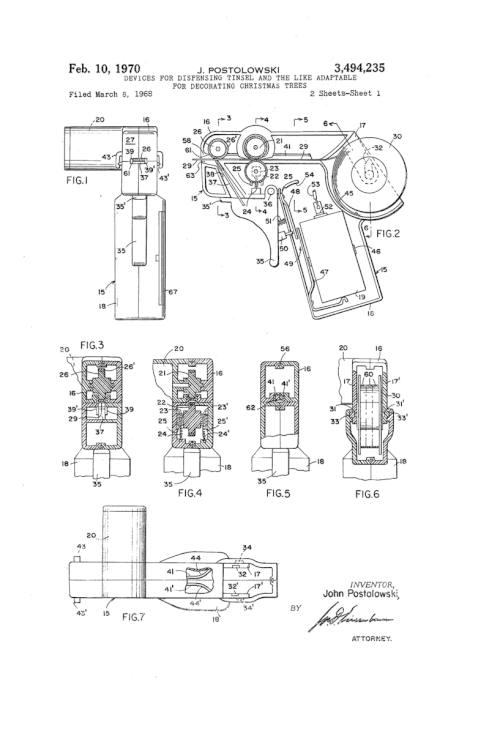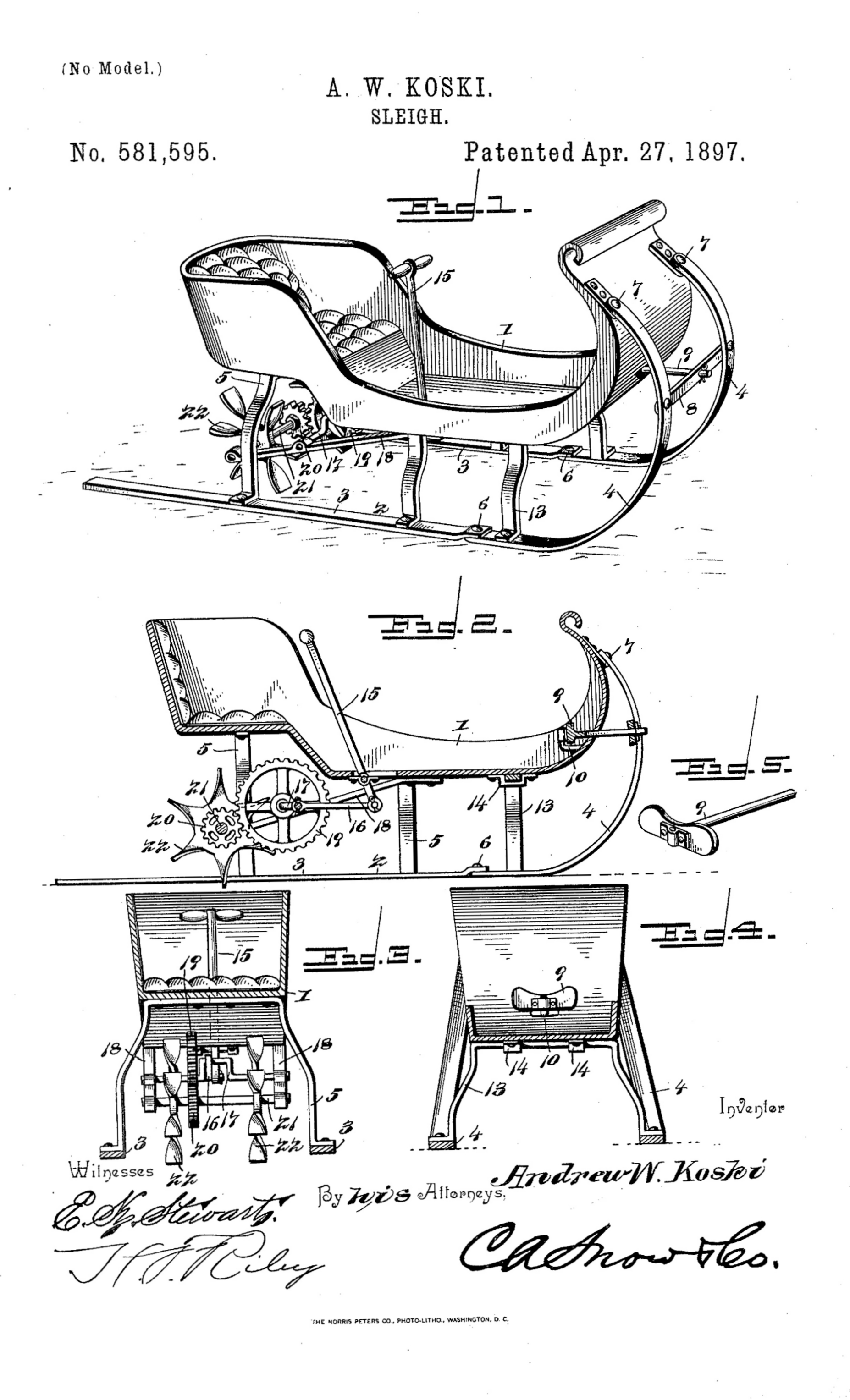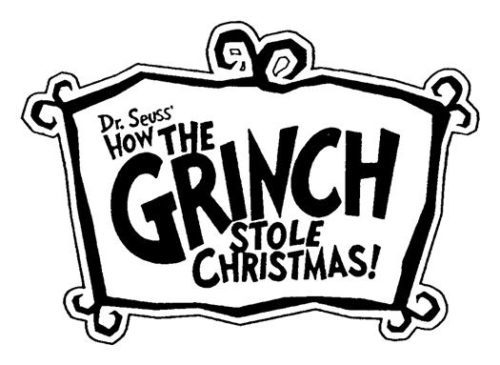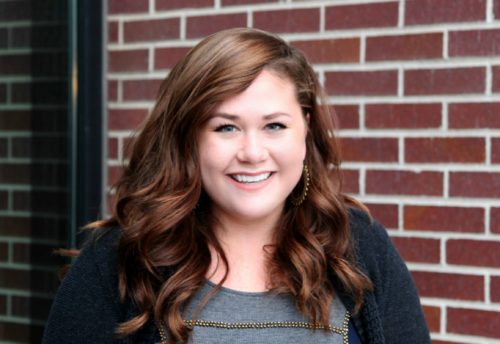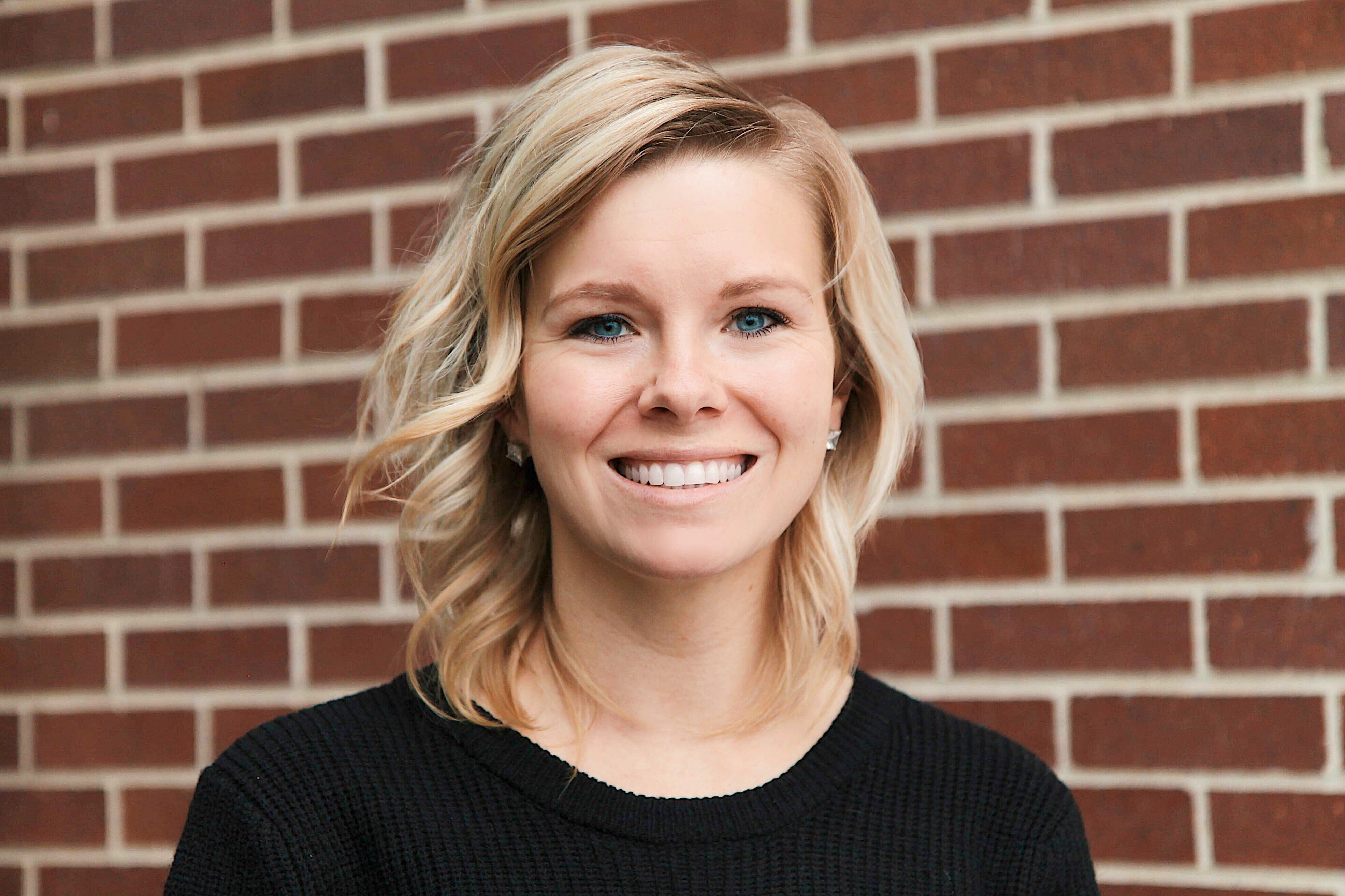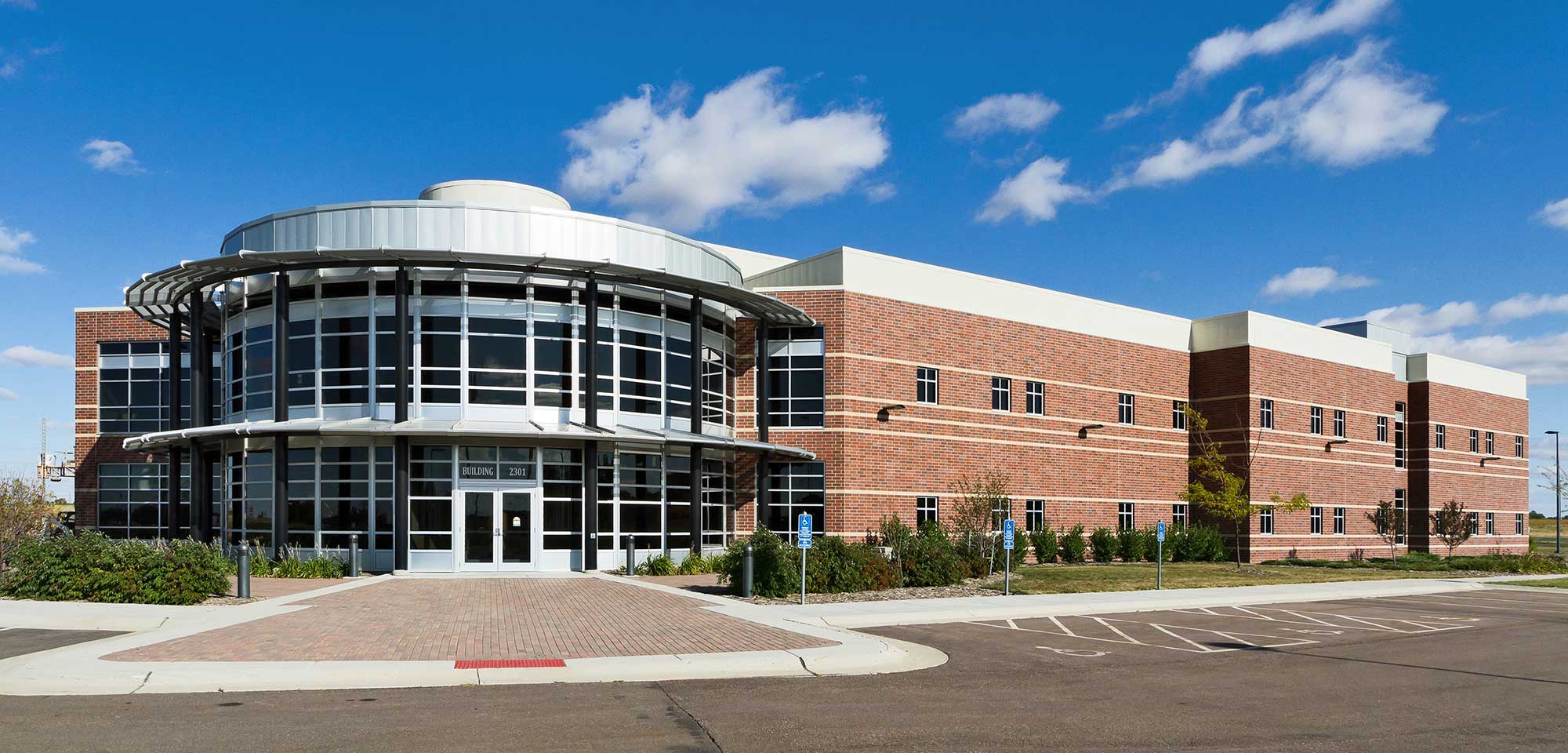Donation Drive Benefiting Victims of Recent Flooding Through March 22
Suiter Swantz IP will be gathering and accepting donations for those affected by the recent flooding in Nebraska and Iowa through Friday, March 22 at 5pm.
Donations can be dropped off in the front of our office at 14301 FNB Pkwy, Suite 220. All items gathered will be transported to the short-term Salvation Army donation center located at the old Canfield’s store near 84th and Center Street on Friday evening. If you would like to drop off a donation, suggested items include:
- Disinfectant wipes
- Gloves
- Dust masks
- Mops, buckets
- Bleach
- Rakes
- Shovels
- Tarps
- Bottled water
- Sports drinks
- Non-perishable snacks
If you prefer to donate in a different way, you can find a list of organizations currently requesting volunteers and monetary donations here.
Matt Poulsen Teaching "Patent Practice & Innovation Management" Course at the University of Nebraska College of Law
Suiter Swantz IP Co-Owner & Patent Attorney Matt Poulsen has helped introduce a new specialized Patent Practice and Innovation Management course at the Nebraska College of Law in Lincoln, NE.
The new course focuses on the lifecycle of patent-protected innovation and helps give students an understanding of the nature of patents, how patents are obtained, and the strategic use of patents.
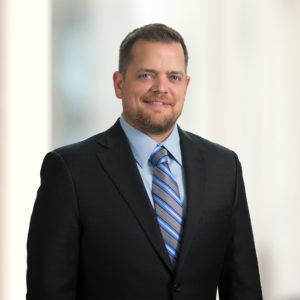
Matt Poulsen
Matt is an alum of the Nebraska College of Law. Prior to receiving his JD from the Law School, Matt obtained his Ph.D., M.S. and B.S. in physics from the University of Nebraska.
Matt represents clients including large Fortune 500 companies, universities, startup companies, and individual inventors. His practice is generally focused on IP procurement and protection, including U. S. and foreign patent preparation and prosecution, patentability and freedom-to-operate analysis and various trademark, copyright, and trade secret matters. Matt also advises clients with respect to various startup related activities, such as early-stage IP strategy.
Suiter Swantz IP is a full-service intellectual property law firm providing client-centric patent, trademark, and copyright services. If you need assistance with an intellectual property matter and would like to speak with one of our attorneys, please contact us at info@suiter.com.
South Dakota Office Hours on March 13
Matt Poulsen, Co-Owner at Suiter Swantz IP and Patent Attorney, will hold office hours at our Brookings, SD satellite office Wednesday, March 13th from 10 a.m. to 4:30 p.m.
Suiter Swantz IP is a proud anchor tenant of Research Park. Along with many other notable establishments, the Brookings Innovation Center at Research Park houses a handful of startup organizations whom Suiter Swantz IP provides resources and advice to regarding patents, trademarks, copyrights, and other forms of intellectual property.
If you’d like to set up a time to meet with Matt, feel free to call our office at (402) 496.0300 or send him an email at map@suiter.com.
Suiter Swantz IP is a full-service intellectual property law firm providing client-centric patent, trademark, and copyright services. If you need assistance with an intellectual property matter and would like to speak with one of our attorneys, please contact us at info@suiter.com.
Celebrating Black History Month: Iconic Inventors Throughout History
As Black History Month comes to a close, we would like to take a moment to shine a light on 10 iconic African American inventors and scientists who have helped shape innovation in the United States.
This slideshow requires JavaScript.

Lonnie G. Johnson
The Super Soaker, Johnson Thermoelectric Energy Converter
Lonnie G. Johnson is most known for his invention of the Super Soaker®, but he is not a toymaker by trade. Johnson is a nuclear engineer who worked for NASA and the U.S. Air Force.
Johnson invented the Super Soaker® while working on a heat pump invention. When he saw water shoot across the room from a hose he had attached to a sink, he thought it would be "neat to develop a high-pressure water gun."
Johnson also knew that if he could create something simple that anyone could understand and appreciate, the revenue from that invention could fund his future passions of scientific innovation and entrepreneurship. It took Johnson more than seven years to bring his water gun prototype to market, but the Super Soaker ended up generating more than $1 billion in sales.
Lonnie G. Johnson has received and over 133 patents and that number continues to rise. One of his most notable inventions is the Johnson Thermoelectric Energy Converter which converts heat directly into electricity. He sees the invention as a path to low-cost solar power.
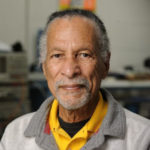
James E. West
Elecret Microphone
James West was inducted into the National Inventors Hall of Fame in 1999 for his contributions to microphone technology. Over 90 percent of today's microphones are electret microphones and are used in items such as cell phones, telephones, laptops, baby monitors, sound and music recording equipment, and hearing aids.
West has received over 200 U.S. and foreign patents. He is also an advocate for science education, particularly among minority students.
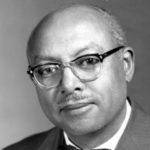
W. Lincoln Hawkins
Polymer Cable Sheath
W. Lincoln Hawkins was inducted into the National Inventors Hall of Fame in 2010 for his contributions to creating polymer cable sheath.
Before the 1940s, lead coating was used to insulate telephone cables, which made the costs of building and maintaining telephone systems expensive and too heavy for practical use. Lead is also an environmental toxin.
Hawkin's team found a way to stabilize polyethylene and created a plastic cable insulation that could withstand changes in temperature and other environmental factors. These contributions have made universal telephone service possible.

Lisa Gelobter
Shockwave Flash, Animated GIFs
Lisa Gelobter is a computer scientist, technologist, and was the Chief Digital Service Officer for the United States Department of Education from 2015 to 2017. She is known for her contributions to Shockwave Flash, Hulu, animated GIFs, and tEQuitable, an independent, confidential platform that addresses issues of bias, discrimination, and harassment in the workplace.
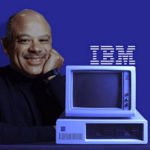
Mark Dean
Peripherals
Mark Dean was inducted into the National Inventors Hall of Fame in 1997 for his contributions to peripherals. Dean's inventions paved the way for growth in the IT industry by allowing use of plug-in subsystems and peripherals like disk drives, video gear, speakers, and scanners. He is also known for co-inventing the personal computer and the color PC monitor.
Dean holds over 20 patents, among them, are three of IBM's original nine PC patents.

Dr. Patricia Bath
The Laserphaco Probe
In 1981, Dr. Patricia Bath invented the Laserphaco Probe, a tool used during eye surgery to correct cataracts. Bath's technology has helped restore or improve vision in patients around the world. She was also the first African American to complete a residency in ophthalmology and the first African American female doctor to secure a medical patent. Bath also co-founded the American Institute for the Prevention of Blindness and advocates for eyesight as a basic human right.
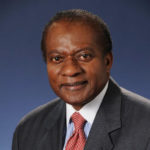
Victor B. Lawrence
Signal Processing in Telecommunications
Victor Lawrence was inducted into the National Inventors Hall of Fame in 2016 for his contributions in improving transmission of the modern internet and making high-speed connections more accessible.
Some of his work includes advancing data encoding and transmission, modem technology, silicon chip design, ATM switching and protocols, DSL, speech and audio coding, and digital video. Lawrence is an advocate for bringing internet access to the world's poorest countries. His efforts include laying fiber optic cable along the west coast of Africa.
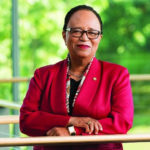
Dr. Shirley Jackson
Touch-Tone Telephone, Caller ID, Fiber-Optic Cable
Dr. Shirley Jackson was the first African-American woman to earn a doctorate in nuclear physics at Massachusetts Institute of Technology. Among her more famous inventions like the touch-tone telephone, caller ID and the fiber-optic cable, Jackson's experiments with theoretical physics paved the way for numerous other telecommunication developments including the portable fax and call waiting.
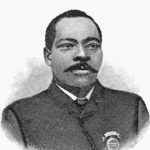
Granville Woods
Railway Telegraphy
Granville Woods was inducted to the National Inventors Hall of Fame in 2006 for his development of the railroad telegraph, a device that transmitted messages between moving trains through means of static electricity. Prior to Woods' invention of the induction telegraph, moving trains were unable to communicate with each other or with rail stations.
Woods held over 60 patents throughout his life including an overhead electric conducting system for rail and trolley cars and a third rail that carries electricity via electromagnetic switches, which is still widely used today. Woods also contributed significantly to the railroad car automatic air brake.
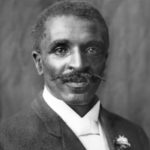
George Washington Carver
Peanut Products, Crop-Rotation Method
George Washington Carver was inducted to the National Inventors Hall of Fame in 1990 for his inventions of peanut products and is also known for popularizing the crop-rotation method. Carver was an agricultural chemist who encouraged planting peanuts and sweet potatoes in between cotton planting seasons as a way to add nutrients back into the soil that had been previously stripped by growing cotton.
Carver is widely known for developing over 325 uses for peanuts. At the end of his life, George Washington Carver contributed his life savings to establish a research institute at Tuskegee Institute.
Suiter Swantz IP is a full-service intellectual property law firm providing client-centric patent, trademark, and copyright services. If you need assistance with an intellectual property matter and would like to speak with one of our attorneys, please contact us at info@suiter.com.
Connectaha Conference March 8th at the Scott Conference Center
Join us at Connectaha, a new software conference focused on inclusive networking and the power of communication.
In just two weeks the Nebraska software community will come together March 8th at the Scott Conference Center in Omaha. Suiter Swantz IP is proud to help sponsor Connectaha 2019 as part of our dedication to fostering innovation in the Omaha community.
"Connectaha isn't just about the talks you get to see, it's also about the people you get to meet and the conversations you have. The goal is to connect people in the software community regardless of role, size of company, or experience. Connectaha is a conference that believes there’s power when people talk and that everyone has something to learn and teach."
The speaker lineup will feature talks on functional programming, QA, design systems, UX, empathy, cybersecurity and more. Our own Scot Ringenberg will speak on "Protecting Your Innovation – Patent Protection and the Patent Process" at 1:30 p.m on March 8. This discussion will focus on intellectual property regarding software, its benefits, the patent and trademark processes, foreign protection, critical timing concerns, and tips for bootstrapping IP protection. To see the full speaker lineup visit connectaha.com/schedule.
Tickets for Connectaha are available for purchase through Eventbrite. If you'd like a discount code for yourself or your business, please email us at info@suiter.com.

Scot M. Ringenberg is a Patent Attorney and Co-owner of Suiter Swantz IP. He received his Bachelor’s Degree in Chemical Engineering from the University of Nebraska Lincoln and his Juris Doctor from the University of Nebraska College of Law. Scot continued his education with the University of Kansas Electrical Engineering and Computer Science Department graduate studies program. He is registered to practice as an attorney before the United States Patent and Trademark Office. Additionally, he has been admitted to the state bars of Nebraska, Kansas, and Missouri.
Scot is also a member of numerous professional and community associations including the State Bar Associations of Nebraska, Missouri, and Kansas, the Institute of Electrical and Electronics Engineers, the American Institute of Chemical Engineers, the American Intellectual Property Law Association and the University of Nebraska-Lincoln Alumni Association. When not practicing Intellectual Property law, Scot enjoys golfing, traveling, attending his family’s numerous activities, and following University of Nebraska Athletics.
Suiter Swantz IP is a full-service intellectual property law firm providing client-centric patent, trademark, and copyright services. If you need assistance with an intellectual property matter and would like to speak with one of our attorneys, please contact us at info@suiter.com.

ICYMI: Shark Tank is coming to Lincoln!
Join us in Lincoln April 5th and 6th as entrepreneurs from across the Midwest come together to network, celebrate innovation, and pitch their business ideas to ABC’s Shark Tank!
Thanks to the Engler Program at the University of Nebraska at Lincoln, Shark Tank casting producers will be holding their first Nebraska casting call on Saturday, April 6th at the Pinnacle Bank Arena from 10:00 a.m. to 3:00 p.m.
The Heartland Shark Tank series of events will kick off Friday, April 5th at 7:30 p.m. at the Rococo Theatre with talks from former Shark Tank contestants, preparation tips from Shark Tank casting producers, and advice from industry experts.
"The Heartland Shark Tank is more than a simple pitch. It’s a unique opportunity to network with other small business owners, hear from local small business leaders, celebrate Midwest entrepreneurship, and take your shot at Shark Tank. We are calling entrepreneurs from near and far to meet us in Lincoln, Nebraska for a chance to pitch your product and potentially change the course of your business." -Heartlandsharktank.com
In partnership with Heartland Shark Tank, we will be providing free 20-minute consultations from 10:00 a.m. to 3:00 p.m. on Saturday, April 6th at Pinnacle Bank Arena during the casting call. To schedule a time to meet with a patent attorney to discuss patent, trademark, copyright, or other intellectual property protection during the event, please reserve a meeting time here or email us at info@suiter.com.
For those attending the casting call who would like more general information regarding the patent process, Suiter Swantz Co-Owner & Patent Attorney Matt Poulsen will also be speaking at The Heartland Shark Tank Speaker Series at 2:00 p.m on Saturday, April 6th at the Pinnacle Bank Arena.
We are proud to help sponsor this rare community event. To sign up to pitch and to find the event's full schedule, rules, tips, and Shark Tank FAQs visit Heartlandsharktank.com.
Suiter Swantz IP is a full-service intellectual property law firm providing client-centric patent, trademark, and copyright services. If you need assistance with an intellectual property matter and would like to speak with one of our attorneys, please contact us at info@suiter.com.
South Dakota Office Hours on February 20
Matt Poulsen, Co-Owner at Suiter Swantz IP and Patent Attorney, will hold office hours at our Brookings, SD satellite office next Wednesday, February 20 from 10 a.m. to 4:30 p.m.
Suiter Swantz IP is a proud anchor tenant of Research Park. Along with many other notable establishments, the Brookings Innovation Center at Research Park houses a handful of startup organizations whom Suiter Swantz IP provides resources and advice to regarding patents, trademarks, copyrights, and other forms of intellectual property.
If you’d like to set up a time to meet with Matt, feel free to call our office at (402) 496.0300 or send him an email at map@suiter.com.
Suiter Swantz IP is a full-service intellectual property law firm providing client-centric patent, trademark, and copyright services. If you need assistance with an intellectual property matter and would like to speak with one of our attorneys, please contact us at info@suiter.com.
USPTO Releases 2019 Revised Patent Subject Matter Eligibility Guidance
Last week the United States Patent and Trademark Office (USPTO) released revised guidance on patent subject matter eligibility (35 U.S.C. § 101).
“The 2019 Revised Patent Subject Matter Eligibility Guidance revises the procedures for determining whether a patent claim or patent application claim is directed to a judicial exception (laws of nature, natural phenomena, and abstract ideas) under Step 2A of the USPTO's Subject Matter Eligibility Guidance in two ways.”
Reciting an abstract idea
The revised guidance first states that if claims do not fall within the categories of mathematical concepts, certain methods of organizing human activity, and mental processes they cannot be characterized as reciting an abstract idea unless otherwise “approved by the USPTO Technology Center Director (which approval will be indicated in the file record of the application), and must provide a justification for why such claim limitation is being treated as reciting an abstract idea.”
More importantly, the revised guidance provides some clarity on how examiners should treat claims after an abstract idea has been identified. Under the revised guidance, examiners will have the burden of showing that claims are directed to an abstract idea and are not directed to a practical application of the abstract idea.
Revised Step 2A Procedure
The updated guidelines include a revised procedure for examiners to determine if a claim is “directed to” a judicial exception under Step 2A of the Alice/Mayo test.
Under the revised procedure, an examiner will first establish whether or not the claim recites a judicial exception, and if it does, the examiner will evaluate whether the claim integrates the judicial exception into a practical application.
“Only when a claim recites a judicial exception and fails to integrate the exception into a practical application, is the claim ‘directed to’ a judicial exception, thereby triggering the need for further analysis pursuant to the second step of the Alice/Mayo test.” The guidance lists several examples of claim elements or combinations of claim elements that may integrate a judicial exception into a practical application, including:
-an additional claim element reflects an improvement in the functioning of a computer or an improvement to other technology or technical field;
-an additional claim element applies or uses a judicial exception to effect a particular treatment or prophylaxis for a disease or medical condition;
-an additional claim element implements a judicial exception with, or uses a judicial exception in conjunction with, a particular machine or manufacture that is integral to the claim;
-an additional claim element effects a transformation or reduction of a particular article to a different state or thing; and
-an additional claim element applies or uses the judicial exception in some other meaningful way beyond generally linking the use of the judicial exception to a particular technological environment, such that the claim as a whole is more than a drafting effort designed to monopolize the exception.
The revised guidelines end stating that if further analysis is needed, the examiner or administrative patent judge will proceed in accordance with existing USPTO guidance as modified in April 2018.”
The 2019 Revised Patent Subject Matter Eligibility Guidance was published in the Federal Register January 7, 2019. It applies to all applications, and to all patents resulting from applications, filed before, on, or after January 7, 2019.
Suiter Swantz IP is a full-service intellectual property law firm providing client-centric patent, trademark, and copyright services. If you need assistance with an intellectual property matter and would like to speak with one of our attorneys, please contact us at info@suiter.com.
12 Days of Christmas IP
From wacky patents to famous trademarks, it's no surprise that the holidays bring out some of the most interesting pieces of intellectual property.
To celebrate Christmas approaching, we've put together some of our favorite pieces of holiday-themed IP for you to enjoy.
1. The Guardian Angel US20090027215A1
This patent was filed by Darrell Hudson from Orange Park, Florida in 2007 to help detect Christmas tree fires during the holiday season.
If you look closely, you'll see that this invention is the product of a fire detector built into a Christmas tree topper.
2. The Santa Claus Detector US5523741A
This patent was filed in 1994 by Thomas Cane from Rafael, California as a way of alerting children that Santa had made a visit to their home.
If you look closely at the patent illustration above, you'll see that each stocking is designed to light up when its loop is retracted from the toe of the stocking.
Each stocking loop is tied to the fireplace mantle bow, so when Santa comes down the chimney he will detach the bow and "set off" all of the attached stockings.
 3. Christmas Tree Self-Watering System - US6497071B1
3. Christmas Tree Self-Watering System - US6497071B1
This invention, cleverly designed as a present, was filed in 2000 by Bryon and Vicki Main from Granite Bay, California as an "improved system for watering Christmas trees and to help prevent fires caused from dried out Christmas trees."
4. Christmas Lights - US2028342A
The first patent for the "method of butt-sealing incandescent electric lamps" was filed in 1934 by Michael E. McGowan from Bloomfield, New Jersey.
This patent also discusses the use of the same method for certain lights inside motor vehicles.
5. Electrically Illuminated Artificial Christmas Tree - US3118617A
The first patent for an artificial Christmas tree with built-in lights was filed in 1960 by Tobias Hellrich from Nurnberg, Germany.
In Figure 3, you can see that this model utilizes the electrical wires (that are used to power the bulbs at the ends of each branch) to hold the artificial tree needles.
6. The Coca-Cola Santa
While the use of Santa as a character is public domain, Coca-Cola has played a significant role in shaping the imagery and characterization of the modern day Santa Claus.
According to Coca-Cola, the company helped create the commonly known Santa as a "wholesome, friendly, plump, and white-bearded" man/character during their annual Christmas marketing campaigns which featured paintings by artist and illustrator Haddon Sundblom.
The illustration above was officially registered as the property of Coca-Cola in 2006. There have been many pieces of Coca-Cola Santa imagery (as well as registered intellectual property) created dating back to as early as 1931.
7. Tinsel Dispensing Device (Tinsel Gun) - US3494235A
In 1968, John Postolowski from New York, New York filed a patent for a "device for dispensing tinsel and the like adaptable for decorating Christmas trees."
As seen in the patent illustrations to the left, the invention's motor mechanism is started and stopped by pushing and releasing a button that resembles a gun trigger. The device is built so that when the trigger is held, the tinsel or other material is threaded/pushed through the gun's muzzle.
8. Disappearing Santa in a Chimney - US3159935A
In 1960, Arnold Rubens from New York, New York, created this device for storefronts or homeowners to use as an animated display during the holidays.
If you look closely, you can see that the Santa figure moves up and down by use of an inflating bag inside the Santa figure.
9. The Sleigh - US581595A
In 1897, Andrew W. Koski from Scofield, Utah designed this type of sleigh to operate by means of an oscillating hand-lever so the operator could move the sleigh in multiple directions.
According to the patent, sleighs before this time could only move directions by use of the operator's feet.
10. Decorative Christmas Tree (Invisible Christmas Tree) - USD612286S1
In 2009, Sandra D. Palmer from Omaha, Nebraska and Shari L. Jones from Nixa, Missouri created this innovative form of a Christmas tree.
This invention is made up of eight hanging rings where ornaments can be hanged onto to give the illusion of a floating Christmas tree.
11. How the Grinch Stole Christmas!
How the Grinch Stole Christmas' first trademark was filed in 1993 by Dr. Suess Enterprises.
Last year the children's tale was of broad interest when playwright Matthew Lombardo created a lewd parodical sequel to the story, shining a light on parody and Fair Use laws.
After receiving multiple Cease and Desist letters from Dr. Seuss Enterprises in 2016, Lombardo canceled his production, "Who's Holiday" and filed a federal lawsuit alleging Fair Use against Dr. Suess Enterprises.
U.S. District Court Judge Alvin K. Hellerstein ended up ruling in favor of Lombardo in 2017.
12. Ornamental Accessory for Automobiles - US1916750A
In 1933, Ray L. Black from Orcutt, California designed an ornamental tree that could be illuminated by mounting the device above a car's radiator.
What is your favorite piece of holiday-themed intellectual property? Be sure to let us know in the comments or on social media @SuiterSwantz.
From all of us at Suiter Swantz IP, we wish you and your family a happy and safe holiday season!
Suiter Swantz IP is a full-service intellectual property law firm providing client-centric patent, trademark, and copyright services. If you need assistance with an intellectual property matter and would like to speak with one of our attorneys, please contact us at info@suiter.com.
Suiter Swantz IP Welcomes Marketing Manager Melanie Lucks
Melanie Lucks joined Suiter Swantz IP in 2018 as our Marketing Manager.
Melanie holds a Bachelor of Arts in Communication from the University of Nebraska at Omaha. She majored in Journalism with concentrations in Public Relations and Advertising. Melanie's background is well-rounded in small business communications, event planning, community relations, startup culture, and creative marketing.
In her first few weeks, Melanie has enjoyed learning about the patent process and looks forward to creating educating and engaging marketing materials regarding intellectual property law.
Outside of work, Melanie enjoys staying active outdoors, taking road trips, cooking, taking care of her houseplants, and spending time with her family and pets.
Suiter Swantz IP is a full-service intellectual property law firm providing client-centric patent, trademark, and copyright services. If you need assistance with an intellectual property matter and would like to speak with one of our attorneys, please contact us at info@suiter.com.
Suiter Swantz IP Welcomes Intellectual Property Assistant Johnna Castle
Johnna Castle joined Suiter Swantz IP in 2018 as an Intellectual Property Assistant.
Johnna attended the University of Nebraska at Omaha for Business Administration and brings over 10 years of business administration and management experience to our team. Her background is well-rounded in client satisfaction, customer service, and a true passion for caring for others.
In her first few months, Johnna has enjoyed learning more about the patent process and looks forward to deepening her knowledge of customer service in relation to intellectual property law.
Outside of work, Johnna enjoys going to the gym, staying active outdoors, watching college football, and spending time with her husband and two young daughters.
Suiter Swantz IP is a full-service intellectual property law firm providing client-centric patent, trademark, and copyright services. If you need assistance with an intellectual property matter and would like to speak with one of our attorneys, please contact us at info@suiter.com.
Research Park at SDSU Celebrates 10 Years of Innovation

Join us in congratulating Research Park at South Dakota State University (SDSU) on a decade of innovation.
This evening, community partners from the City of Brookings, Brookings County, the Brookings Economic Development Corporation, South Dakota State University, the South Dakota State University Foundation, and more will come together to celebrate 10 years of innovation at Research Park.
The celebration will include student and business awards, networking, and a keynote speech from Senator Mike Rounds on the economic impact that Research Park has had on the state of South Dakota. To learn more about the event visit Research Park's Facebook event page.
Along with many other notable establishments, the Brookings Innovation Center houses a handful of startups whom Suiter Swantz IP provides resources and education to regarding intellectual property. We are a proud anchor tenant of Research Park and look forward to many more years of community partnership to come.
Research Park is the product of many organizations and private donors who came together with the goal of propelling knowledge-based economic development in eastern South Dakota.
Matt Poulsen, Co-Owner at Suiter Swantz IP and Patent Attorney, will hold office hours at our Brookings, SD satellite office in Research Park next week. If you'd like to set up a time to meet with Matt, feel free to send him an email at map@suiter.com.


